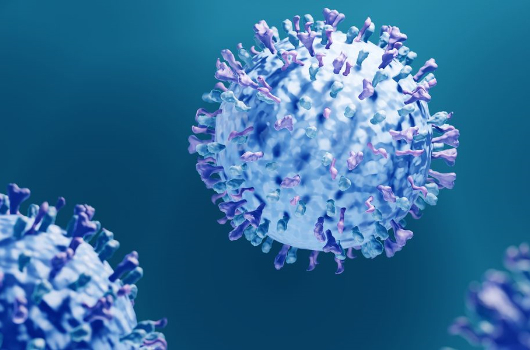Clinical Study
Unraveling the Mystery of PCR Testing: Accuracy, Comparison, and Beyond

HealthTrackRx • May 3, 2024
In the realm of modern medicine, Polymerase Chain Reaction (PCR) testing stands out as a revolutionary tool for diagnosing a wide array of infections. Its precision, speed, and versatility have transformed the healthcare landscape, offering providers invaluable insights into infectious diseases. In this introductory guide, we’ll touch on the basics of PCR testing, explore its accuracy, and compare it to traditional culture methods.
What is PCR Testing?
Polymerase Chain Reaction (PCR) testing is a sophisticated molecular technique used to detect the presence of genetic material (DNA or RNA) from pathogens such as viruses, bacteria, fungi, or protozoa in a patient sample. The process involves several key steps:
- Sample Collection: A sample, typically taken from the patient’s nose, throat, or other bodily fluids, is collected using a swab or another appropriate method.
- Nucleic Acid Extraction: The genetic material (DNA or RNA) is extracted from the sample using specialized laboratory techniques.
- PCR Amplification: The extracted genetic material is then amplified using PCR. This process involves replicating regions of the genetic material specific to each organism, making it easier to detect and analyze.
- Detection: If there is amplification of the genetic material specific to an organism, then that organism was present in the original sample.
PCR testing vs. traditional diagnostic methods
- Sensitivity: It can detect even tiny amounts of genetic material from pathogens, making it highly sensitive and capable of identifying infections in the early stages.
- Speed: Can deliver results rapidly, often within hours, enabling clinicians to make timely treatment decisions.
- Versatility: Can be adapted to detect a wide range of pathogens, including viruses, bacteria, and fungi, making it a versatile tool in diagnosing infectious diseases.
How accurate are PCR tests?
One of the most crucial factors in any diagnostic test is its accuracy. Fortunately, PCR testing is renowned for its exceptional accuracy and reliability. Here’s why:
- Specificity: PCR tests are highly specific, meaning they can accurately identify the target pathogen with minimal risk of false positives. This specificity is achieved by designing primers (short DNA sequences) that specifically bind to the genetic material of the target pathogen, ensuring that only the desired genetic sequences are amplified and detected.
- Sensitivity: PCR tests are also incredibly sensitive, capable of detecting even small amounts of genetic material from pathogens. This high sensitivity enables PCR testing to identify infections in the early stages when traditional methods may yield false-negative results.
- Quality Control: PCR testing undergoes rigorous quality control measures to ensure accuracy and reliability. Laboratories adhere to strict protocols and standards to minimize the risk of contamination and ensure consistent results.
While PCR testing is highly accurate, it’s essential to interpret the results in the context of the patient’s clinical presentation and other diagnostic findings. Like any diagnostic test, PCR testing rarely produces false-positive or false-negative results, highlighting the importance of clinical judgment and follow-up testing when necessary.
How does PCR Testing Compare to Culture?
Traditionally, cultures have been the gold standard for diagnosing infectious diseases. However, modern PCR testing offers many advantages over culture methods:
- Speed: Delivers results much faster than cultures, often within hours compared to days for cultures. This rapid turnaround time allows clinicians to initiate appropriate treatment promptly, reducing the risk of complications and transmission of the infection.
- Sensitivity: More sensitive than cultures, capable of detecting lower levels of genetic material from pathogens. This heightened sensitivity increases the likelihood of detecting infections, especially in the early stages, when the pathogen may be present in low concentrations.
- Versatility: It can detect a broader range of pathogens than cultures, including viruses, bacteria, and fungi from a single collection device. This versatility makes PCR testing invaluable in diagnosing a wide array of infectious diseases, from respiratory infections to sexually transmitted infections.
- Automation: It is highly automated, allowing for higher rates of testing and scalability. This automation streamlines the testing process, reducing the need for manual intervention and minimizing the risk of errors.
- Cost-effectiveness: While PCR testing may initially have slightly higher upfront costs than cultures, its rapid turnaround time and high sensitivity can lead to cost savings in the long run. Early detection and treatment of infections can prevent complications and reduce healthcare costs associated with prolonged hospital stays and additional diagnostic tests.
Conclusion
PCR testing has revolutionized the field of diagnostic medicine, offering unparalleled accuracy, speed, and versatility in detecting infectious diseases. While cultures remain a useful tool in certain situations, PCR testing has emerged as the cornerstone of modern infectious disease diagnosis, revolutionizing patient care and improving clinical outcomes. With its exceptional accuracy, rapid turnaround time, and broad range of applications, PCR testing has become an indispensable tool for clinicians worldwide, empowering them to diagnose and treat infectious diseases with unprecedented precision and efficiency.
Related Articles and White papers

HealthTrackRx • May 3, 2024
In the realm of modern medicine, Polymerase Chain Reaction (PCR) testing stands out as a revolutionary tool for diagnosing a wide array of infections. Its precision, speed, and versatility have transformed the healthcare landscape, offering providers invaluable insights into infectious diseases. In this introductory guide, we’ll touch on the basics of PCR testing, explore its accuracy, and compare it to traditional culture methods.
What is PCR Testing?
Polymerase Chain Reaction (PCR) testing is a sophisticated molecular technique used to detect the presence of genetic material (DNA or RNA) from pathogens such as viruses, bacteria, fungi, or protozoa in a patient sample. The process involves several key steps:
- Sample Collection: A sample, typically taken from the patient’s nose, throat, or other bodily fluids, is collected using a swab or another appropriate method.
- Nucleic Acid Extraction: The genetic material (DNA or RNA) is extracted from the sample using specialized laboratory techniques.
- PCR Amplification: The extracted genetic material is then amplified using PCR. This process involves replicating regions of the genetic material specific to each organism, making it easier to detect and analyze.
- Detection: If there is amplification of the genetic material specific to an organism, then that organism was present in the original sample.
PCR testing vs. traditional diagnostic methods
- Sensitivity: It can detect even tiny amounts of genetic material from pathogens, making it highly sensitive and capable of identifying infections in the early stages.
- Speed: Can deliver results rapidly, often within hours, enabling clinicians to make timely treatment decisions.
- Versatility: Can be adapted to detect a wide range of pathogens, including viruses, bacteria, and fungi, making it a versatile tool in diagnosing infectious diseases.
How accurate are PCR tests?
One of the most crucial factors in any diagnostic test is its accuracy. Fortunately, PCR testing is renowned for its exceptional accuracy and reliability. Here’s why:
- Specificity: PCR tests are highly specific, meaning they can accurately identify the target pathogen with minimal risk of false positives. This specificity is achieved by designing primers (short DNA sequences) that specifically bind to the genetic material of the target pathogen, ensuring that only the desired genetic sequences are amplified and detected.
- Sensitivity: PCR tests are also incredibly sensitive, capable of detecting even small amounts of genetic material from pathogens. This high sensitivity enables PCR testing to identify infections in the early stages when traditional methods may yield false-negative results.
- Quality Control: PCR testing undergoes rigorous quality control measures to ensure accuracy and reliability. Laboratories adhere to strict protocols and standards to minimize the risk of contamination and ensure consistent results.
While PCR testing is highly accurate, it’s essential to interpret the results in the context of the patient’s clinical presentation and other diagnostic findings. Like any diagnostic test, PCR testing rarely produces false-positive or false-negative results, highlighting the importance of clinical judgment and follow-up testing when necessary.
How does PCR Testing Compare to Culture?
Traditionally, cultures have been the gold standard for diagnosing infectious diseases. However, modern PCR testing offers many advantages over culture methods:
- Speed: Delivers results much faster than cultures, often within hours compared to days for cultures. This rapid turnaround time allows clinicians to initiate appropriate treatment promptly, reducing the risk of complications and transmission of the infection.
- Sensitivity: More sensitive than cultures, capable of detecting lower levels of genetic material from pathogens. This heightened sensitivity increases the likelihood of detecting infections, especially in the early stages, when the pathogen may be present in low concentrations.
- Versatility: It can detect a broader range of pathogens than cultures, including viruses, bacteria, and fungi from a single collection device. This versatility makes PCR testing invaluable in diagnosing a wide array of infectious diseases, from respiratory infections to sexually transmitted infections.
- Automation: It is highly automated, allowing for higher rates of testing and scalability. This automation streamlines the testing process, reducing the need for manual intervention and minimizing the risk of errors.
- Cost-effectiveness: While PCR testing may initially have slightly higher upfront costs than cultures, its rapid turnaround time and high sensitivity can lead to cost savings in the long run. Early detection and treatment of infections can prevent complications and reduce healthcare costs associated with prolonged hospital stays and additional diagnostic tests.
Conclusion
PCR testing has revolutionized the field of diagnostic medicine, offering unparalleled accuracy, speed, and versatility in detecting infectious diseases. While cultures remain a useful tool in certain situations, PCR testing has emerged as the cornerstone of modern infectious disease diagnosis, revolutionizing patient care and improving clinical outcomes. With its exceptional accuracy, rapid turnaround time, and broad range of applications, PCR testing has become an indispensable tool for clinicians worldwide, empowering them to diagnose and treat infectious diseases with unprecedented precision and efficiency.
Related Articles and White papers





